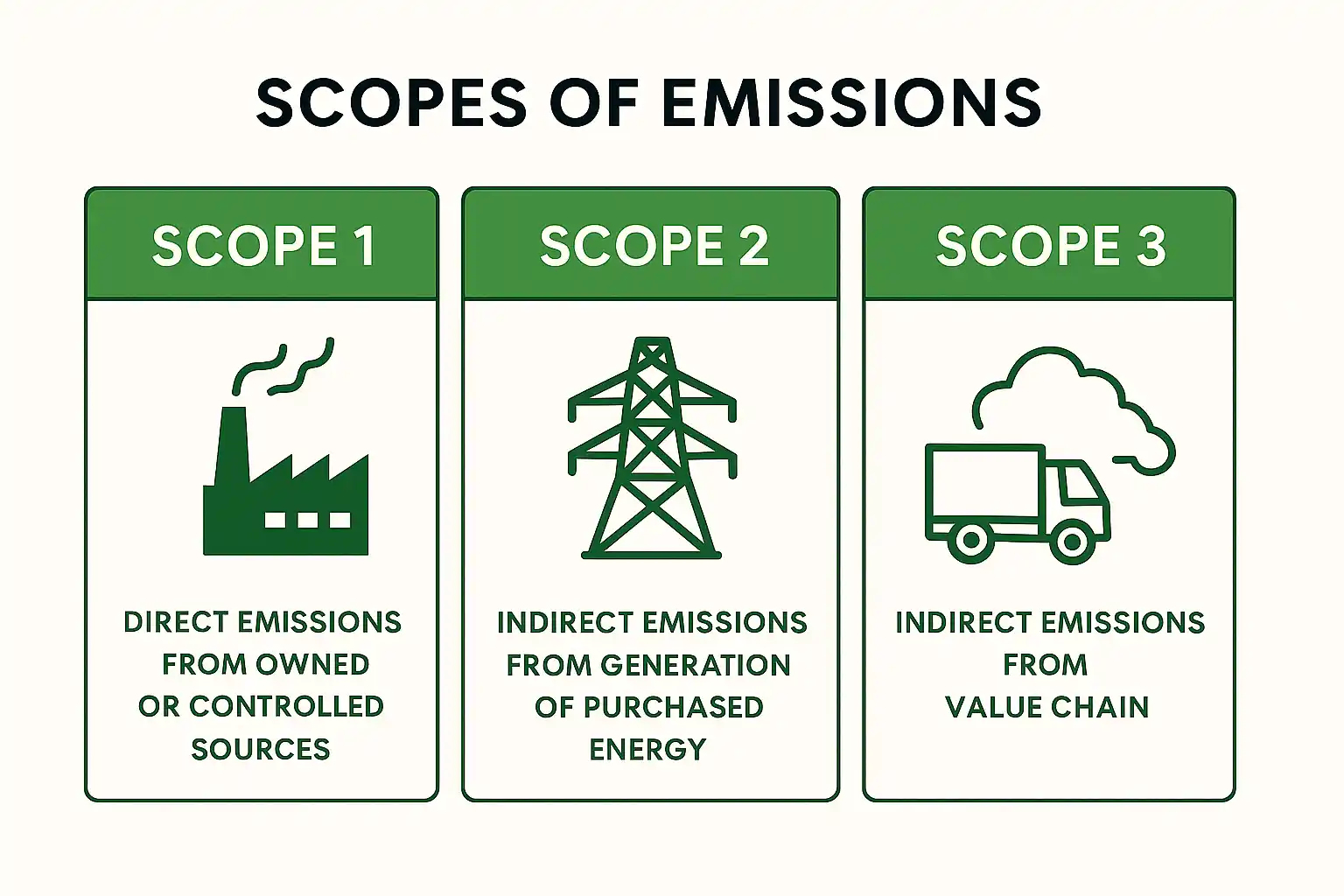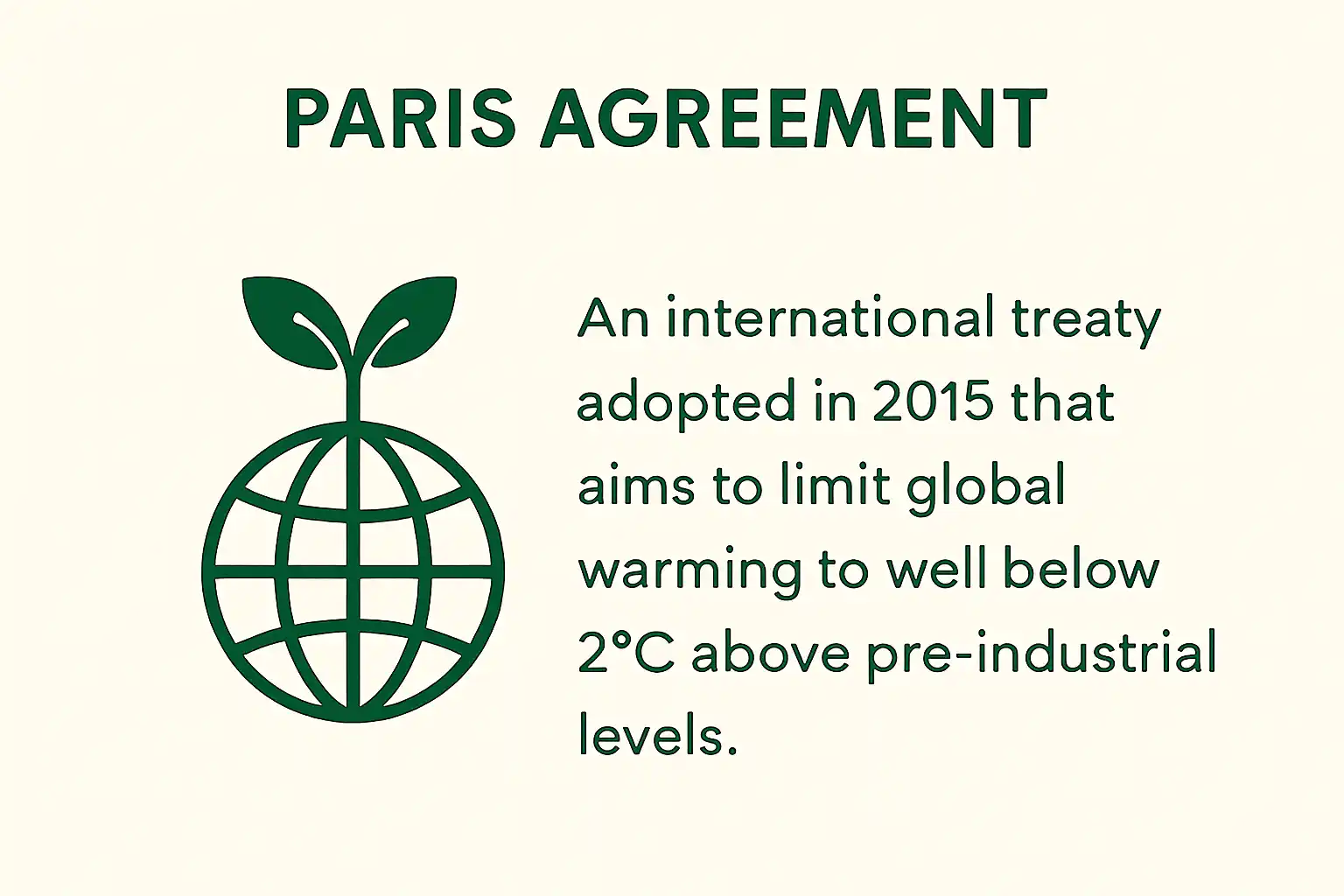Tailored Packaging Solutions, Just for You


From sourcing materials to delivering products, every business decision leaves a carbon footprint. Yet for many companies, these emissions remain invisible, hidden in day-to-day operations, making it easy to overlook their true environmental impact.
Tailored Packaging Solutions, Just for You

From sourcing materials to delivering products, every business decision leaves a carbon footprint. Yet for many companies, these emissions remain invisible, hidden in day-to-day operations, making it easy to overlook their true environmental impact.
As global climate targets tighten and regulatory pressure increases, ignoring these emissions is no longer an option. Real carbon reduction begins with carbon awareness, and that awareness starts by understanding emissions factors.
In this article, we’ll explain what emissions factors are, how they’re calculated, and why they matter for businesses committed to reducing their environmental impact.
Emissions factors are standardized numbers used to estimate how much greenhouse gas, like carbon dioxide (CO2), is released from a specific activity, material, or energy use.
These numbers help translate everyday actions (such as driving a mile, manufacturing a product, or burning fuel) into measurable carbon emissions when direct measurement is not possible.
Also called conversion factors, emission intensity, or carbon intensity, emissions factors provide a practical way to calculate carbon footprints without measuring emissions directly every time.
According to the EPA, burning one gallon of gasoline produces about 19.6 pounds of CO2.This emissions factor allows businesses and individuals to accurately estimate their environmental impact.
Emissions factors come in different categories depending on the source of emissions. Understanding these types helps businesses identify where their biggest impacts lie and target reduction efforts effectively.
Trusted Sources of Emission Factors
When measuring carbon footprints, it’s crucial to rely on trusted and scientifically verified emissions factors. Here are some of the most reputable sources used globally by businesses, governments, and researchers:
Calculating emissions all starts with the Intergovernmental Panel on Climate Change (IPCC), which sets international guidelines and baseline factors for consistent global reporting.
Researchers then measure emissions from real-world sources like power plants, vehicles, and factories under different conditions, taking into account key variables such as:
These types of variables directly influence how much greenhouse gas is emitted.
Next, national environmental agencies (like the US EPA or the UK’s DEFRA) adapt these baselines to local conditions, reflecting each country’s energy mix, technology, and industrial practices.
Here’s the basic formula businesses use to calculate greenhouse gas emissions:

These emissions are typically reported in tonnes of CO2 equivalent (tCO2e), which combines all major greenhouse gases into one standard measure.Keep in mindEmissions factors aren’t fixed. They evolve with science, technology, and local context, making them the most reliable way to estimate emissions without measuring every source directly.Why Understanding and Lowering Emissions Factors Is Critical for Modern Businesses
EFs provide a standardized method to calculate GHG emissions across the entire supply chain, bringing several important benefits for companies focused on lowering their emissions, including:
And these are just a few reasons why understanding and lowering emissions factors is quickly becoming a critical business imperative. Here are the key drivers behind this urgent shift:
In markets where buyers increasingly demand proof of sustainability, companies with lower carbon emissions per product or service gain a measurable advantage.
For example, many large corporations now require suppliers to disclose their carbon footprints.
Having carbon emission data for production is becoming an increasingly important criterion for companies when selecting accredited suppliers. Many large corporations are now s etting their own carbon reduction targets in line with the European Climate Law.
Similarly, consumers are choosing brands that can demonstrate clear, verified reductions in their environmental impact, making your lower emissions a powerful selling point.
Scope 3 emissions are indirect greenhouse gases (GHGs) occurring throughout a company’s value chain (both upstream and downstream) but not directly owned or controlled by the company.
While emissions come from Scope 1, 2, and 3, Scope 3 often accounts for the largest portion of an organization’s total carbon footprint.

Lowering emissions at the material or process level helps downstream partners reduce their Scope 3 emissions, making your business a more attractive and responsible supply chain partner.
Life Cycle Assessments (LCAs) evaluate a product’s environmental impact from raw material extraction to disposal.
Products with lower emissions factors consistently score better in these assessments, which directly improves Environmental Product Declarations (EPDs) – comprehensive, independently verified product declarations that clearly communicate a product’s sustainability credentials.
This advantage also increases eligibility for eco-label certifications and compliance with increasingly strict green building standards like LEED or BREEAM.
In competitive markets, stronger LCA scores enhance brand reputation and open doors to sustainability-focused buyers and projects.
Governments worldwide are tightening climate rules, including carbon pricing (like the EU Emissions Trading System and Canada’s carbon tax), emissions caps(California’s Cap-and-Trade), and Extended Producer Responsibility (EPR) laws (EU Waste Framework Directive, Japan’s recycling programs).
These regulations hold companies worldwide accountable for the full lifecycle emissions of their products.
Lowering your emissions factors reduces your risk of fines, penalties, and costly compliance. Taking early action ensures you stay ahead of evolving standards, protecting your bottom line and brand reputation.
Investor scrutiny on environmental impact is intensifying, with many focusing on carbon intensity per unit of revenue or output as a key metric of operational efficiency and risk management.
Companies with low emissions demonstrate strong climate resilience and commitment to sustainable growth, qualities that attract ESG-focused funds and institutional investors.
This not only improves access to capital but can also lead to better financing terms and shareholder confidence, fueling long-term business success in a carbon-constrained economy.
The Science Based Targets initiative (SBTi) is a globally recognized framework that helps companies set measurable, science-backed goals to reduce greenhouse gas emissions.
It requires businesses to align their climate actions with the Paris Agreement goal of keeping global warming well below 2℃, with an ambition to limit it to 1.5°C. This ensures targets are based on the latest climate science and contribute meaningfully to global efforts.

SBTi goes beyond surface-level changes by demanding real reductions across the entire value chain. Companies must address emissions not only in their direct operations but also across their supply chains, product design, distribution, and product use and disposal.
Meeting these targets shows a strong commitment to environmental responsibility and building a sustainable future.
Using updated emissions factors that reflect the latest process improvements and material changes ensures greenhouse gas (GHG) reports are precise and reliable. This prevents inflated carbon footprints that can mislead stakeholders or trigger costly regulatory scrutiny.
For example, switching to a supplier with a verified lower emissions factor improves the accuracy of your Scope 3 reporting and helps you track real progress.
Lower cradle-to-gate emissions factors allow companies to make verified “low-carbon” or “climate-smart” product claims that resonate with sustainability-minded consumers and B2B buyers.
In packaging or consumer goods, this can mean differentiating your brand with eco-labels or environmental product declarations (EPDs) that meet stringent certification standards, opening doors to green markets.
Identifying products or processes with high emissions factors often leads to innovations like substituting energy-intensive materials, optimizing manufacturing steps, or redesigning products to reduce emissions.
These changes not only cut carbon but can lower costs, such as using recycled inputs that require less energy or streamlining supply chains to reduce transport emissions.
Reducing your company’s carbon footprint starts with knowing exactly where emissions come from, and acting on that insight. Here is how:
Now that you understand what emissions factors are and why they matter, the next step is putting them to work. Businesses that integrate carbon emissions data into everyday decisions gain a real edge in today’s sustainability-driven market.
So whether you are selecting low-impact packaging, rethinking logistics, or setting ambitious carbon-reduction targets, emissions factors give you the clarity to act with confidence.
The sooner you start measuring, optimizing, and reducing, the greater the benefits for your business and the planet. Contact us today and let us be part of your journey toward a lower-carbon future.

We here at Nissha will support you every step of the way!
















